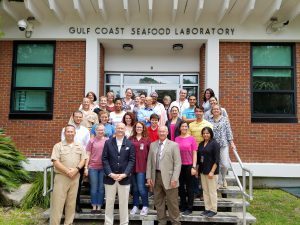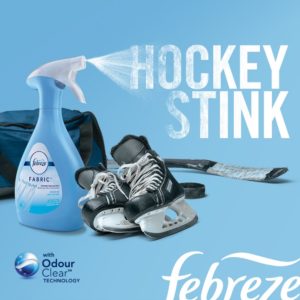I love it when scientists and regulators pick up the microphone – or keyboard – and explain what they do.
I’ve had the pleasure of working with a couple of military-backed food safety types, as well as those dispatched from Fort Riley in Kansas.
 These friendships endure, and I hope they’ve learned a fraction of what I’ve learned from them.
These friendships endure, and I hope they’ve learned a fraction of what I’ve learned from them.
Capt. William Burkhardt III, Ph.D, Director of FDA’s Division of Seafood Science and Technology, writes that on a barrier island in the Gulf of Mexico, two dozen scientists and staff in the FDA’s only marine research laboratory have one common goal: to keep consumers safe from contaminated or unsafe seafood.
I am the director of the FDA’s Gulf Coast Seafood Laboratory (GCSL) on Dauphin Island, Alabama, where we detect chemical and biological hazards and work to reduce the likelihood of illness associated with seafood. In early August, the agency invited U.S. Rep. Robert Aderholt to tour the facility and see our work first-hand. Rep. Aderholt represents Alabama’s Fourth Congressional District and chairs the House Appropriation Committee’s Subcommittee on Agriculture, Rural Development, Food and Drug Administration, and Related Agencies.
At the GCSL, we use the latest technology to detect and identify things that can potentially contaminate seafood. There are drug and chemical residues that may be present from the use of antibiotics and other chemicals in aquaculture production. There are also petrochemicals from off-shore drilling.
There are marine biotoxins that occur naturally, such as harmful algal toxins that go up the marine food chain and eventually get into fish. There are bacteria that occur naturally in marine waters, such as vibrios, that can cause serious, even deadly, illnesses. And there are viruses, such as the norovirus, in marine water that are ingested by shellfish.
We routinely test a wide array of samples from public and private sources, and work closely with FDA’s compliance and enforcement teams in and out of the country so that action can be taken when appropriate.
Our scientists are often brought in when a natural or man-made disaster threatens to contaminate fish or an outbreak is tied to seafood. We’re involved right now in the response to an outbreak of hepatitis A in Hawaii tied to imported scallops, providing microbiological support to identify the virus that has sickened more than 200 people.
When the Deepwater Horizon oil rig exploded in 2010, spilling an estimated 4.9 million barrels of oil into the Gulf of Mexico, we staffed sampling locations. A year after that spill, we allayed the concerns of fishermen participating in the Alabama Deep Sea Fishing Rodeo tournament, billed as the largest fishing tournament in the world. FDA’s Office of Regulatory Affairs set up a mobile laboratory in our parking lot and together we tested samples that fishermen brought in, working round-the-clock for two weeks. We were able to assure the fishermen that there was no oil or dispersants in their fish.
In 2005, we were heavily involved in the response to Hurricane Katrina, in which there were concerns that chemicals would be swept into the Gulf and then into the fish. We deployed staff to sample crabs, shrimp and other seafood and send them by courier back to our labs. Ultimately, we found some elevated levels of bacterial contamination, but that dissipated relatively quickly during the time in which the area was closed to fishing.
We are also invited by other countries to assist in emergency response. For example, six years ago we traveled to Chile after an earthquake there and used our technology to detect norovirus in the drinking water.
When Haiti was hit with a cholera outbreak in 2010, we responded in collaboration with the Centers for Disease Control and Prevention. Our tests found cholera in seafood collected from Port au Prince. These findings were used to tighten recommendations on the movement of ballast water in and out of ships to minimize transmission of the outbreak.
We work with the seafood industry to find practical solutions to common problems. For example, we’re working with oyster fisherman to identify strategies to control bacterial (vibrio) growth. And we’ve advised barracuda fishermen to avoid certain parts of the Caribbean where the fish are vulnerable to biotoxins.
As I showed Rep. Aderholt around our labs, it was a good opportunity to reflect on the important work we do here and the impact we have. Whether it’s in the United States or overseas, we want to be known as a group of scientists that helps people everywhere enjoy seafood safely.
 The educational methods enlisted to facilitate food safety certification included group meetings, instructional material delivery, individual farm instruction, and expert instruction. In addition, there were four challenges to food safety certification identified—the needs for motivation, information, clarification, and resources—along with strategies to address the challenges.
The educational methods enlisted to facilitate food safety certification included group meetings, instructional material delivery, individual farm instruction, and expert instruction. In addition, there were four challenges to food safety certification identified—the needs for motivation, information, clarification, and resources—along with strategies to address the challenges.









